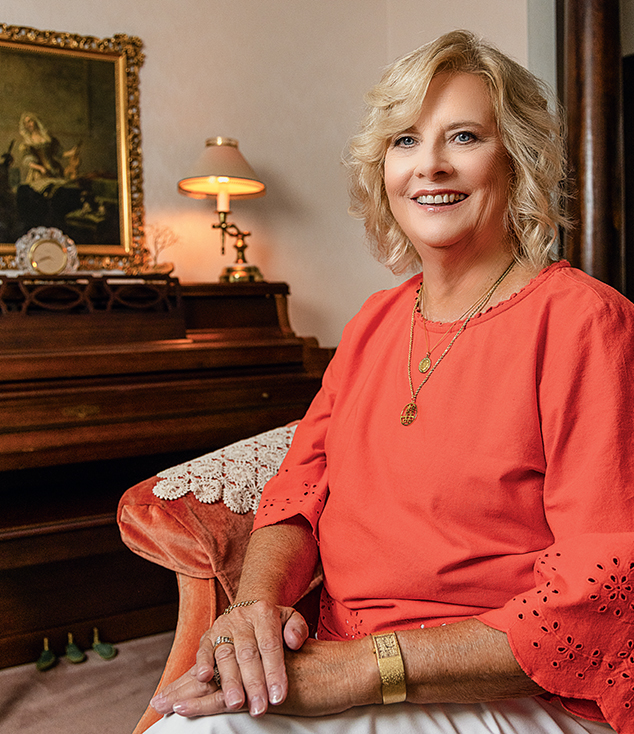Building Beyond Blueprints

Terry Adams combined technical skill, leadership and mentorship to shape projects — and people — during her decades at Procter & Gamble
As a high school senior, Theresa Lynne (Smith) Adams (BSCE '74) told her guidance counselor she wanted to pursue engineering. The reply was blunt: We don’t recommend that for girls.
“That was the mindset back then,” Adams said. “I faced discouragement right from the start.”
But Adams wasn’t deterred. She was enrolled in a drafting class for boys in high school — likely because of the traditionally masculine spelling of her nickname, Terry — that revealed both a talent and a passion for technical problem-solving. “I realized I was good at drafting, and I really liked it,” Adams said. “That class changed the trajectory of my life.”
It was the support of her parents, who often told her “You can do anything you set your mind to do,” and her own determination that led her to Purdue — one of the few institutions that welcomed women into its engineering program in 1970. “At other universities, they flat-out told me they weren’t interested in admitting women,” Adams said. “Purdue said yes. And that yes made all the difference.”
Adams entered the College of Engineering in 1970, part of a small but growing number of women. “It could be intimidating being one of only two women in a class,” she said. “But the professors treated me like I belonged. I didn’t feel like I had to constantly prove I deserved to be there. That support mattered, especially the mentorship of my counselor and teacher, Professor John M. Hayes.”
That environment set the foundation for a career defined by perseverance, adaptability and impact. The first firm she joined post-graduation closed within a year. At that point, Adams took a position with Procter & Gamble — just as the company was expanding internationally and embracing new approaches to manufacturing and operations.
“I thought I’d stay a few years,” Adams said. “I ended up staying for nearly three decades.”
At P&G, Adams found herself at the forefront of change. She worked as a technical engineer, rising to roles in project management and program management working with product development and advertising, verseeing new products, facilities and process improvements. “I was involved in everything from plant design to quality systems,” she said. “I applied my civil engineering background, but I also had to learn finance, leadership and organizational development along the way.”

Her role eventually grew into leading the company’s global cost engineering processes — work that required both technical precision and cultural fluency. “I traveled the world — Europe, Asia, South America — training teams, standardizing systems and helping people think differently about how they managed operations,” she said. “It was fascinating. Every culture approaches problems in its own way, and I got to learn from all of them.”
Adams built a reputation not just as a skilled engineer, but also as a trusted leader and mentor. She credits Purdue with instilling in her the confidence to step into those roles. “Purdue gave me the technical foundation, but more than that, it gave me the sense that I belonged in engineering,” she said. “That confidence carried me through every new challenge at P&G.”
She also understood the significance of her presence in spaces where few women had come before. “Early in my career, I walked into plenty of rooms where I was the only woman,” Adams said. “But over time, that started to change. I was proud to help open doors for the women who came after me.”
Looking back, she sees her path not asmeticulously planned, but as a series of opportunities she was willing to embrace. “I didn’t set out with a master plan,” she said. “I took the chances that came, I worked hard and I stayed curious. That’s what led me forward.”
Now retired, Adams reflects on what she values most: not just the projects she led, but the people she influenced along the way. “The real legacy is the people,” she said. “When someone tells me, ‘You made a difference in my career, you helped me see what was possible,’ that’s the greatest reward.”
Her success circles back to Purdue — the place that first said yes. “Purdue opened the door when others wouldn’t,” she said. “That gave me a chance to prove myself. And once I had that chance, I didn’t waste it.”
For today’s generation of students, Adams offers advice rooted in her own experience of persistence and possibility. “You may not know exactly where you’re going, and that’s okay,” she said. “What matters is saying yes to opportunities, believing you belong and being willing to do the work. If you do that, the path will open up for you.”
